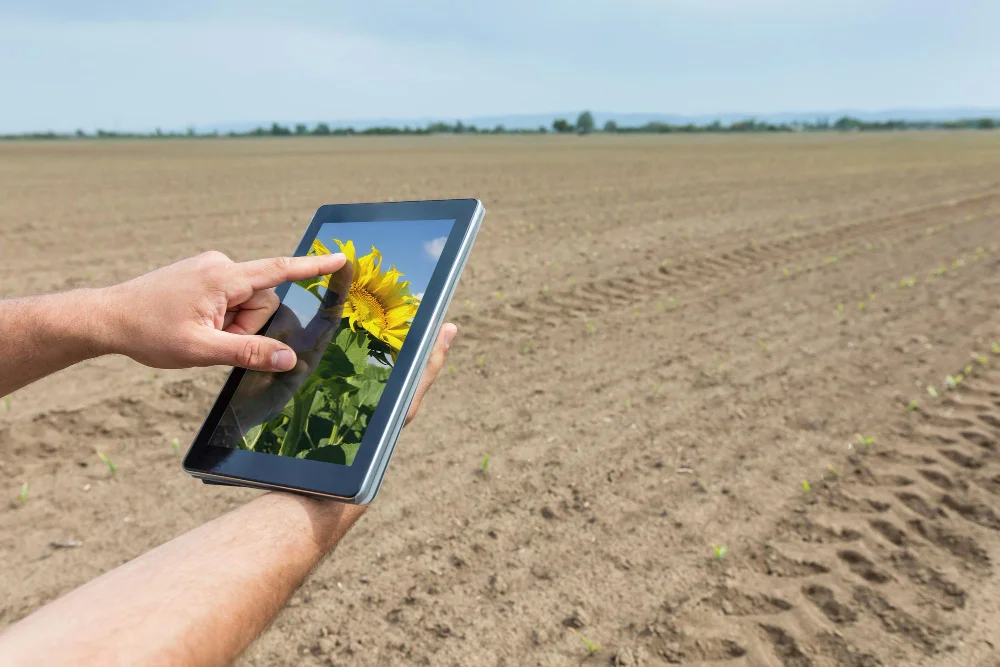Weather conditions play a pivotal role in shaping the growth and development of crops throughout their lifecycle. From planting to harvest, each phase of a crop’s journey is intimately connected to the prevailing weather patterns. Understanding and predicting these weather impacts is vital for effective agricultural planning and resource allocation. This article explores how weather conditions influence various stages of crop growth and highlights the role of advanced crop modeling in utilizing crop weather outlook to make informed farming decisions.
The Lifecycle of Crop Growth and Weather Impacts:
1. Germination and Seedling Stage: Weather conditions at the early stages of germination and seedling growth significantly impact crop establishment. Adequate moisture, temperature, and light are critical factors for successful germination. Drought or extreme cold can hinder germination, leading to poor stand establishment.
2. Vegetative Growth: During this phase, favorable weather conditions, including optimal temperature and adequate sunlight, support healthy leaf and stem development. Excessive heat or prolonged cloudy periods can stunt growth and affect plant vigor.
3. Flowering and Pollination: Weather conditions directly influence flowering and pollination. Adequate sunlight, temperature, and moderate humidity are essential for successful pollination and fruit set. Adverse weather, such as heavy rains or strong winds, can disrupt pollination, leading to reduced yields.
4. Fruit Development and Ripening: Weather patterns impact fruit development and maturation. Consistent temperature and sunlight contribute to uniform fruit size and quality. Sudden temperature fluctuations or moisture stress can result in irregular ripening and reduced market value.
5. Harvest and Post-Harvest: Favorable weather during harvest ensures efficient and timely collection of crops. Excessive rainfall or humidity can lead to post-harvest losses due to rot or fungal infections.
Utilizing Crop Weather Outlooks in Agricultural Practices:
Crop weather outlooks provide invaluable insights into upcoming weather conditions, enabling farmers to adapt their practices to maximize crop productivity and minimize risks. Advanced crop modeling, integrated with these outlooks, facilitates data-driven decision-making. Here’s how:
1. Planting Decisions: Farmers consult crop weather outlooks to determine suitable planting windows based on predicted weather patterns. This minimizes the risk of planting during unfavorable conditions, leading to improved stand establishment.
2. Irrigation Management: Weather outlooks guide irrigation decisions by predicting rainfall and evapotranspiration rates. This ensures crops receive the right amount of water, preventing both water stress and waterlogging.
3. Fertilization Planning: Advanced crop models, fed with weather predictions, optimize fertilizer application schedules. This prevents nutrient leaching due to heavy rainfall and enhances nutrient uptake during periods of active growth.
4. Pest and Disease Management: Crop weather outlooks help predict conditions conducive to pest and disease outbreaks. Farmers can take preventive measures such as applying pesticides or implementing cultural practices to mitigate risks.
5. Harvest Timing: Weather outlooks aid in determining the optimal time for harvest, considering factors like precipitation, temperature, and humidity. This ensures that harvested crops are of high quality and have a longer shelf life.
6. Resource Allocation: Farmers can allocate resources more efficiently by aligning tasks like irrigation, fertilization, and pest control with expected weather conditions, reducing waste and enhancing resource use.
The Role of Advanced Crop Modeling:
Advanced crop modeling elevates the utility of crop weather outlooks by providing a comprehensive view of how weather impacts crop growth and yield. These models consider various factors, including historical climate data, soil characteristics, and crop-specific parameters. By simulating the interactions between weather and crop physiology, advanced crop models generate accurate predictions of growth outcomes under different scenarios.
For instance, advanced crop modeling can help assess the effects of extended periods of heat stress on grain development, enabling farmers to consider strategies like adjusting planting dates or selecting heat-resistant varieties. Similarly, models can predict the impact of excessive rainfall on fruit quality, guiding decisions on whether to harvest early or implement protective measures.
Incorporating real-time weather data into advanced crop models further enhances accuracy. These models generate forecasts for specific locations and enable farmers to tailor their practices to local microclimates.
Conclusion: Harnessing Insights for Resilient Agriculture
Weather profoundly influences crop growth and, consequently, agricultural productivity. Crop weather outlooks, combined with advanced crop modeling, empower farmers to anticipate and respond to weather-related challenges and opportunities. By linking weather forecasts to various growth stages, farmers can implement timely interventions, optimize resource use, and mitigate risks. This synergy of weather insights and advanced crop modeling not only supports more sustainable and efficient farming practices but also contributes to building resilient agricultural systems that can withstand the uncertainties of a changing climate. As technology continues to advance, the integration of weather predictions with sophisticated modeling will play an increasingly pivotal role in shaping the future of agriculture.


















